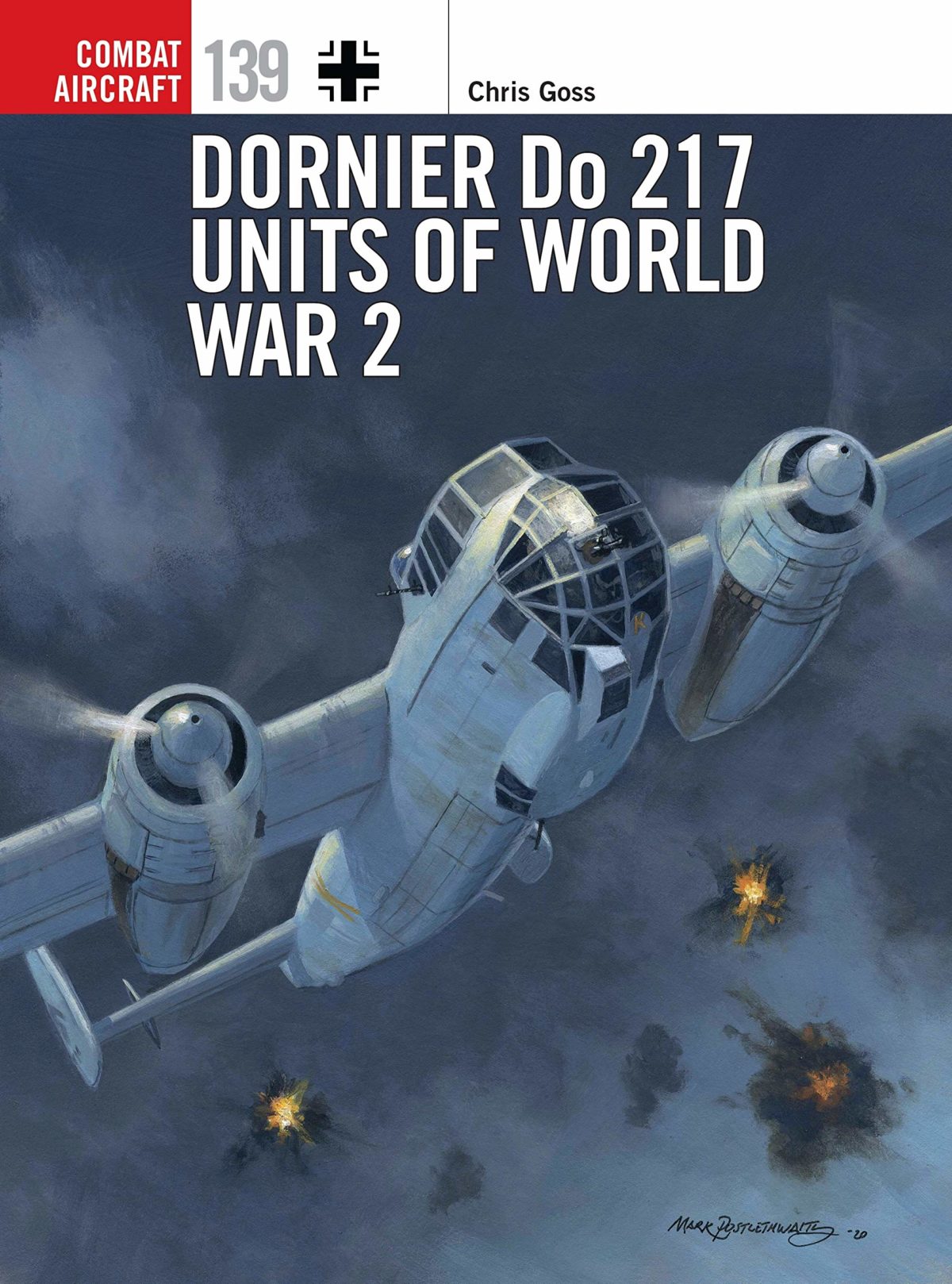by Chris Goss, Osprey, 2021, $24.
When Dornier introduced its sleek twin-engine Do-17 in 1935, it was hailed as the “Flying Pencil.” By 1940, however, the Do-17Z was regarded as inferior to Germany’s other two principal bombers, the Heinkel He-111 and Junkers Ju-88. In January 1942 the Luftwaffe began receiving a larger, more powerful redesign of the basic Do-17 formula, the Do-217. The bomber took on a variety of other roles, including reconnaissance plane and night fighter, and could accommodate such advanced weaponry as air-to-surface missiles and guided glider bombs. For all that, the Do-217 was the last Dornier bomber to reach production and was virtually absent in the last eight months of World War II. Evaluating one after the war, British test pilot Eric “Winkle” Brown summed it up as “a moderate aircraft which established an undistinguished but honourable operational record.”
In Dornier Do 217 Units of World War 2, retired Royal Air Force officer and specialist in Luftwaffe operations Chris Goss draws on firsthand accounts by both the bomber crews and British night fighter pilots who fought them to chronicle a warplane caught up in a reversal of fortune for its users. Although most crews regarded the Do-217J and N night fighters as insufficiently maneuverable if they encountered their British counterparts, Goss does not neglect their exploits, including the experiences of the Italians who briefly used them in the summer of 1943.
The author admits to having scant information on the Eastern Front. Still, the book provides plenty of interest, including 30 color profiles that show the aircrafts’ camouflage and markings, as diverse as the nature of their missions.






